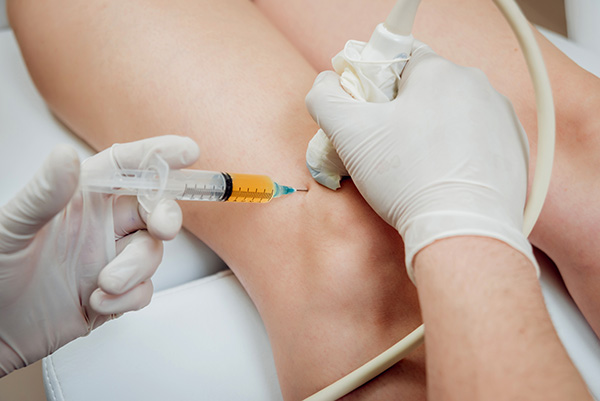Interventional Radiology
Interventional Radiology is a radiology sub-specialty in which minor surgical procedures are performed using technologically advanced imaging.
At Fraser Coast Radiology these Procedures include, but are not limited to:

ARTHROGRAM
An arthrogram is an X-ray image or picture of the inside of a joint (e.g. shoulder, knee, wrist, ankle) after a contrast medium (sometimes referred to as X-Ray dye) is injected into the joint.
BARIUM STUDIES
Barium swallow and a barium meal studies involve you swallowing a liquid suspension of barium sulphate before a series of X-rays are taken of your upper digestive tract.
BREAST LOCALISATIONS
This is a type of biopsy performed when you have an abnormality which is detected on a Mammogram (and verified by Ultrasound).
CT GUIDED INJECTIONS
A CT guided steroid injection is commonly performed to treat inflammation of the nerve roots or the facet joints of the spine, as well as inflammation in joints throughout the body.
CT GUIDED DRAINAGE
A CT guided drainage allows our Radiologist to insert a needle into an abnormal fluid collection in the body. The needle/catheter is inserted to allow fluid to be removed.
HYSTEROSALPINGOGRAPHY
Hysterosalpingography, also known as uterosalpingography, is a radiologic procedure to investigate the shape of the uterine cavity and the shape and patency of the fallopian tubes. This means it is a special x-ray using dye to look at the womb and fallopian tubes.
SIALOGRAPHY
Sialography (also termed radiosialography) is the radiographic examination of the salivary glands. It usually involves the injection of a small amount of contrast medium into the salivary duct of a single gland, followed by routine X-ray projections. The resulting diagram is called a sialogram.
ULTRASOUND GUIDED BIOPSIES
An ultrasound-guided biopsy is a medical test used to learn more about a lesion or mass. The biopsy is done by using an ultrasound to find the lesion or mass. This is one type of “image-guided” biopsy, which combines the use of ultrasound with either a Fine Needle Aspiration or Core Needle Biopsy.
ULTRASOUND GUIDED STERIOD INJECTIONS
The Radiologist uses ultrasound to guide a needle into the affected area and cortisone and local anaesthetic are delivered to this region. The area injected may be different to where you feel your pain but rest assured that the cortisone is getting to where it needs to be.
Everyone has a different response to these procedures. If you have a limited response or no response at all to the injection it is important that you let your referring doctor.
ULTRASOUND GUIDED PLATELET RICH PLASMA (PRP)
PRP is an extract of your own blood that contains a high concentration of platelets, growth factors, and bio-active proteins essential for tissue regeneration and healing.PRP works by stimulating the body’s natural healing mechanisms. When tissue is injured, the body responds by sending specific ‘super healer’ cell types to the site of injury to start the repair process. These ‘super healers’ are platelets and once they are injected will release growth factors, which act as ‘chemical controllers’ for cellular repair.
Everyone has a different response to these procedures. If you have a limited response or no response at all to the injection it is important that you let your referring doctor.
For more information on PRP for Knees read Patient Brochure PRP for Knees
For more information on PRP for Tendons read Patient Brochure PRP for Tendons
Do I Need an Appointment for my Procedure?
Appointments are required for all Procedures as we need to book you time with the Radiologist and an Ultrasound/CT Scan room.
We will require you to send through a copy of your request form in advance (via fax, email or in person) to ensure your appointment runs as smoothly as possible.
How do I prepare for my Procedure?
Preparation for interventional procedures can vary. For example, you may need to fast for 2 hours prior to your scheduled appointment time or there may be restrictions on your taking some medication prior to the procedure. This depends upon a number of factors. When you phone to arrange your appointment one of our friendly staff will advise you of any preparation requirements. They may ask you questions relating to previous injections and your clinical history regarding asthma, allergies and diabetes.
For PRP Procedures to save time on the day of your appointment download and complete the form below and present to our receptionist when you arrive:
How long does the Procedure take?
Most procedures take between 20 and 30 minutes, though some may take longer.
Are there any risks or side effects from my Procedure?
Your doctor has sent you for this procedure knowing that the information (or pain relief) provided is more beneficial than the very low risk associated with it. There is a small risk of adverse reaction following injection of x-ray contrast. This would normally be evident while you are still in the clinic and would be treated appropriately by the Radiologist.
What is the cost of my Procedure?
Most Procedures are eligible for a Medicare rebate. Depending on your personal circumstances, the Medicare rebate may not cover the entire cost of your procedure, however, please discuss costs with our reception staff at the time of booking your appointment.
